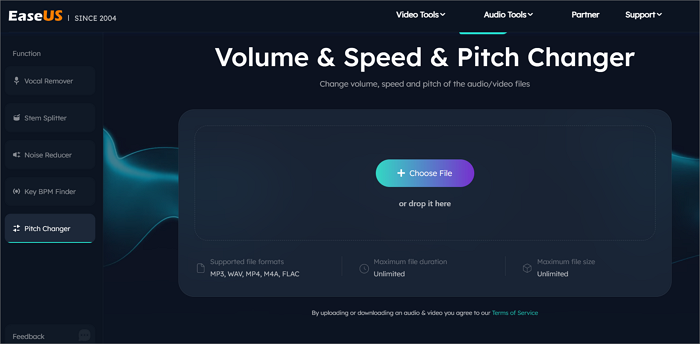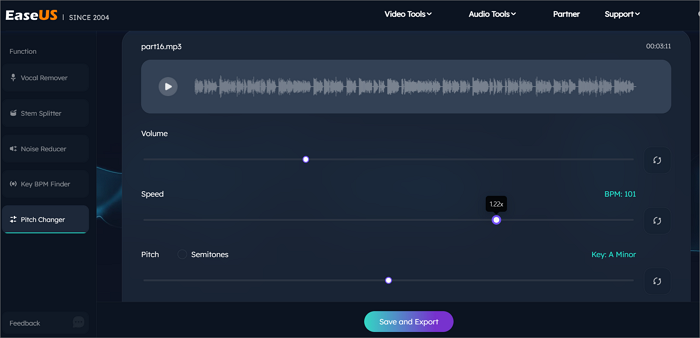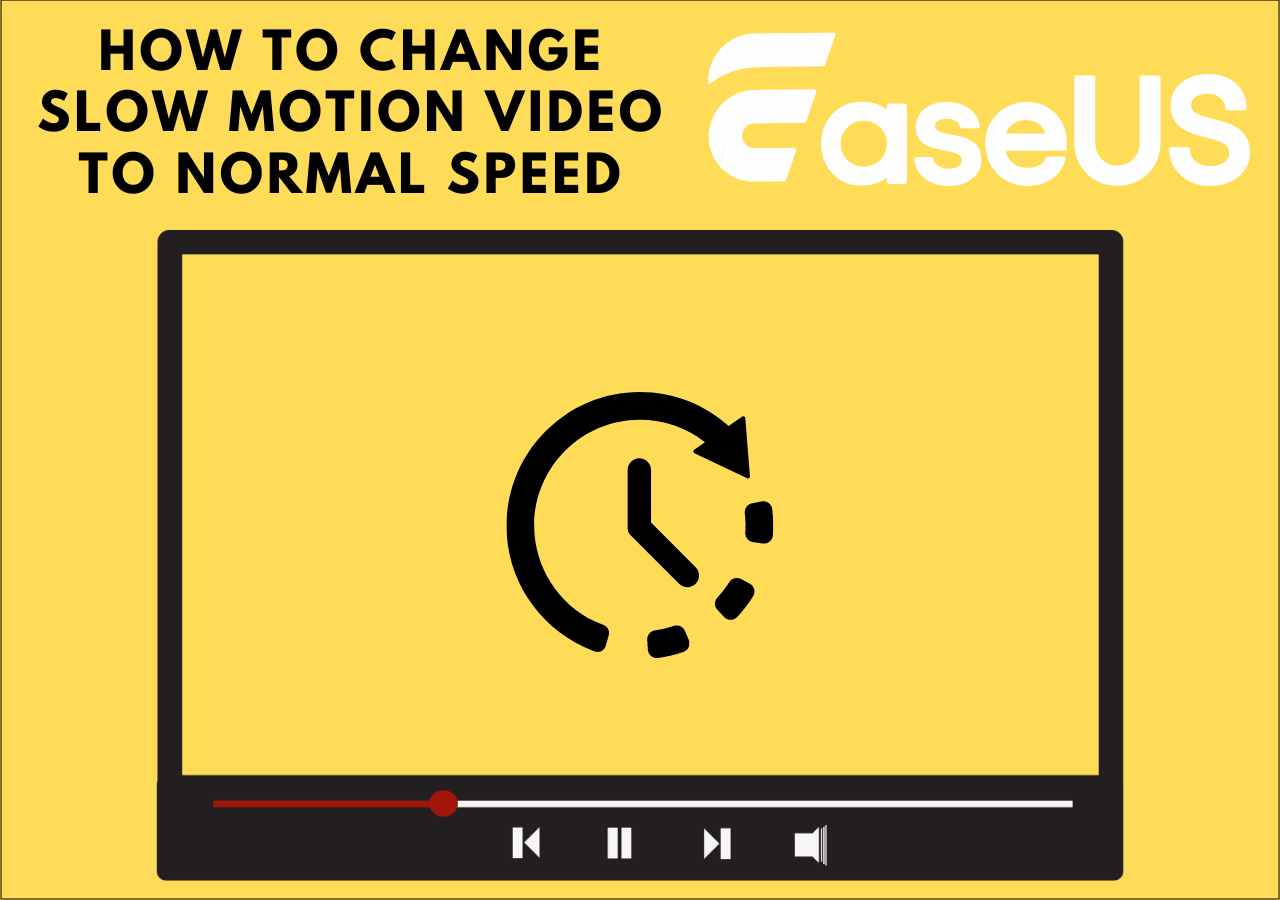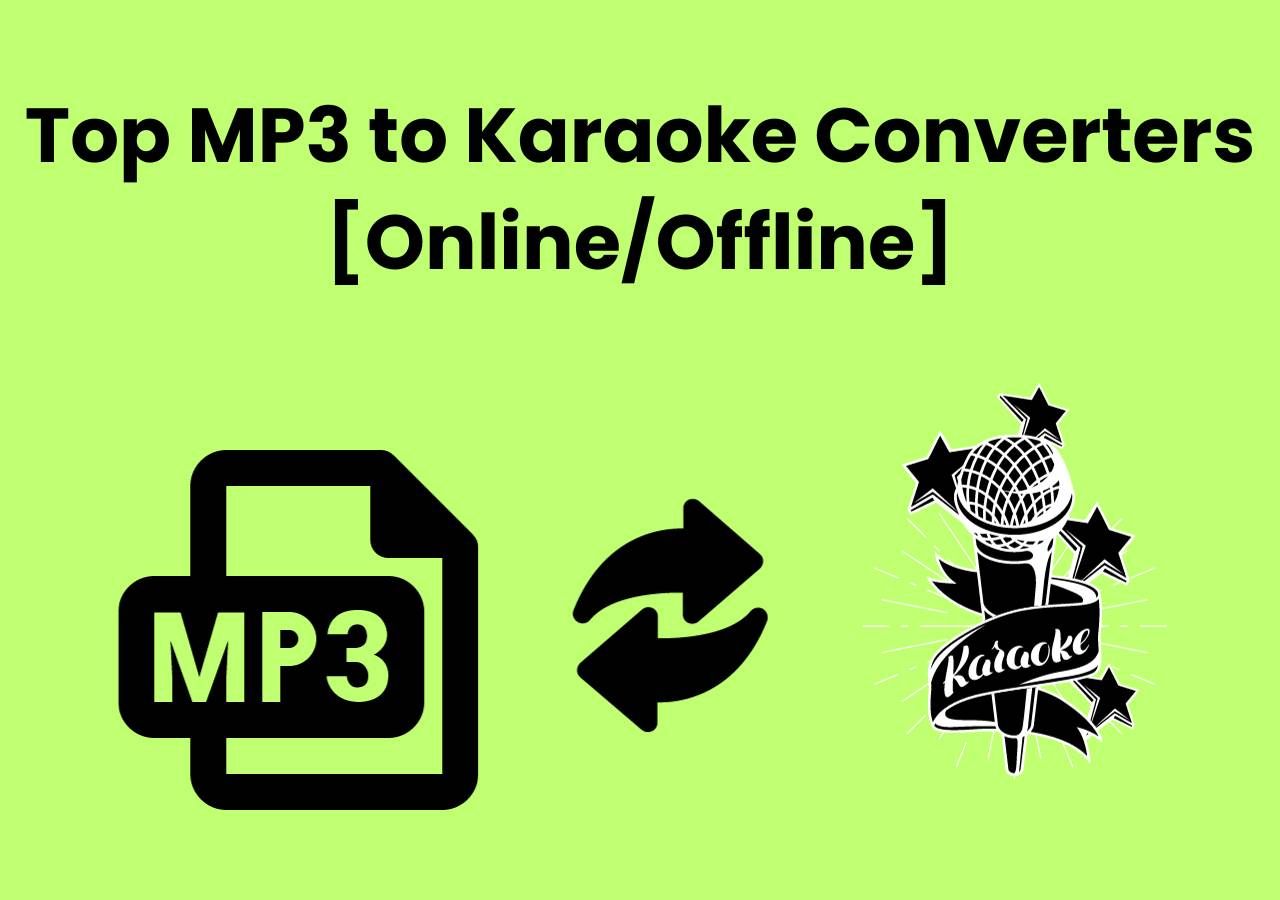-
![]()
Sofia Albert
Sofia has been involved with tech ever since she joined the EaseUS editor team in March 2011 and now she is a senior website editor. She is good at solving various issues, such as video downloading and recording.…Read full bio -
![]()
Melissa Lee
Melissa Lee is a sophisticated editor for EaseUS in tech blog writing. She is proficient in writing articles related to screen recording, voice changing, and PDF file editing. She also wrote blogs about data recovery, disk partitioning, data backup, etc.…Read full bio -
Jean has been working as a professional website editor for quite a long time. Her articles focus on topics of computer backup, data security tips, data recovery, and disk partitioning. Also, she writes many guides and tutorials on PC hardware & software troubleshooting. She keeps two lovely parrots and likes making vlogs of pets. With experience in video recording and video editing, she starts writing blogs on multimedia topics now.…Read full bio
-
![]()
Gorilla
Gorilla joined EaseUS in 2022. As a smartphone lover, she stays on top of Android unlocking skills and iOS troubleshooting tips. In addition, she also devotes herself to data recovery and transfer issues.…Read full bio -
![]()
Rel
Rel has always maintained a strong curiosity about the computer field and is committed to the research of the most efficient and practical computer problem solutions.…Read full bio -
![]()
Dawn Tang
Dawn Tang is a seasoned professional with a year-long record of crafting informative Backup & Recovery articles. Currently, she's channeling her expertise into the world of video editing software, embodying adaptability and a passion for mastering new digital domains.…Read full bio -
![]()
Sasha
Sasha is a girl who enjoys researching various electronic products and is dedicated to helping readers solve a wide range of technology-related issues. On EaseUS, she excels at providing readers with concise solutions in audio and video editing.…Read full bio
Content
Quick Answer
How to Change Apple Music Playback Speed on Windows
How to Change Apple Music Playback Speed on Mac
How to Adjust Apple Music Playback Speed on iPhone/iPad and Android
Fix: Apple Music Playback Speed too Fast
Bonus: How to Play Faster than Normal Speed in iTunes
The Bottom Line
FAQs on Apple Music Playback Speed
4094 Views |
6 min read
Quick Answer
🎉To adjust Apple Music playback speed, play the music, then long-press the "Forward" button to speed up the track, or long-press the "Backward" button to slow it down.
🎉To change a music playback speed permanently, try to use EaseUS Speed Changer.
Apple Music app is one of the leading applications for playing music by users around the globe. Whether you use iTunes or Apple Music on your iPhone, it is one of the best apps for playing music from your library.
However, some of its key features require users to be pointed in the right direction. For instance, it's easy to speed up songs on Spotify, but for Apple Music, it can be a difficult task. Today, we will make it easy and show you how you can change audio speed on Apple Music.
There are different methods for Windows, PC, and iPhone. However, worry not—we'll show you multiple ways and also show you how to use an Apple Music speed changer. So, let's dive in and show you how to adjust Apple Music playback speed.
How to Change Apple Music Playback Speed on Windows
One of the first ways to change the speed of Apple Music playback is through the iTunes app on Windows. The iTunes app on Microsoft's operating systems works flawlessly and allows you to adjust Apple Music play speed easily.
So, here's how you can slow down MP3 or speed up a song from the Apple Music library on Windows with the help of iTunes:
Step 1. Launch the iTunes app on your PC/Windows. Once done, go into the library and explore music.
Step 2. Play any music track and wait for the player to begin. It shouldn't take more than a second.
Step 3. Once the track is playing, long-press the "Forward" button to speed the track up.

Step 4. Now, to slow it down, long-press the "Backward" button until it slows down.

After this, you will notice Apple Music's playback speed shift when you press your button. Unfortunately, there's no way to keep it playing at a higher or lower speed continuously.
How to Change Apple Music Playback Speed on Mac
The process of changing the Apple Music play speed on Mac remains more or less the same as the process on Windows. However, you won't have to download any additional programs like iTunes, as Mac has it built into the library.
All you have to do is play the song that you wish to alter the speed of and then follow these steps to speed up or slow the music down:
Step 1. Open the iTunes app on Mac.
Step 2. Explore the library and choose a song to play.
Step 3. Once it's playing, click and long-press the "Forward" button to speed up playback.

Step 4. Now, to slow down, click and long-press the "Backward" button.

As the one method before this, there's now a way to keep the speed slowed down or amped up. You will have to hold the said buttons to keep the speed at a certain point.
How to Adjust Apple Music Playback Speed on iPhone/iPad and Android
Apple Music is relatively easy to use and offers many more options for speeding up the music compared to the Mac counterpart. It lets you change your music tempo to any level you like, from 0.5x to 2.0x. However, we won't be talking about that, as we'll focus on changing the music playback speed on iPhone.
This means we'll also be using the forward and backward options in the app to quicken or slow down the songs on Apple Music. Here's how to do this:
Step 1. Open the iOS Music app on the iPhone.
Step 2. Select and play a song from the library.
Step 3. As the song plays, touch and hold the "Fast Forward" button to speed up the track.

Step 4. Touch and hold the "Backwards" button to slow down the track.

Once done, you shall be able to quicken it up or slow it down using these buttons. You can also use the speed button in the Music app, where it shows "1x" to mark the speed the songs play.
Fix: Apple Music Playback Speed too Fast
Changing or altering the speed of songs on an iPhone can sometimes result in music playback playing too fast. This happens because users usually end up increasing the tempo in the playlist/library and then forget to change it.
So, the fix is quite simple, and all you have to do is change the speed back to normal, which is 1x. Here's how to do it in the Music app on your iPhone:
Step 1. Open the Apple Music app on your iPhone.
Step 2. Play music from your library.
Step 3. Now find the "Speed/1x" icon on the bottom.
Step 4. Make sure it's set to "1x" from all the choices.

Besides this, you can also use an Apple Music converter and an online tool to change the tempo of specific files. This is recommended if the song's flow is quicker than you prefer it. However, the option above will help you fix the general playback speed if it's too fast.
Bonus: How to Play Faster than Normal Speed in iTunes
If you are looking for a permanent way to speed up or slow down audio, then EaseUS Speed Changer is the answer. The tool is primarily known to remove vocals from a song, but it has other vital features that allow users to change various things about a music file.
This includes helping users speed up YouTube videos after they convert them into audio files. That's why it's an excellent choice if you have converted Apple Music files on your PC. You can also simply add Apple Music songs to your PC and then use the MP3 files.
This tool allows you to change the BPM and Playback speed of the song without having to download it. Since it's online, all you have to do is download and convert Apple Music into MP3 or other supported audio files. Try this now!
So, here's how to use it once you download Apple Music songs to your PC:
Step 1. Enter the main interface of EaseUS Online Speed Changer. The left sidebar shows new functions of this online tool. Find "Pitch changer" and click it.

Step 2. Then, drop the audio/video file in the blank. It supports multiple file formats, including MP3, MP4, WAV, M4A, and FLAC.
Step 3. The website will analyze your file with AI. You can drag the little dot in the "Speed" section to slow down or speed up with a range of 0.5X to 1.5X.

Step 4. Click "Save and Export" to download the processed file to your local file location.
Once done, click "Save and Export" to download the high-quality MP3 file to your PC. This will save the file in this specific playback and allow you to listen to it without needing to speed it up or slow it down again.
The Bottom Line
There are a few key ways to alter the Apple Music playback speed easily. It's pretty easy to simply push and keep pressing the forward button to speed up the music. Or, you can press the backward button to slow it down.
However, if you're looking for a way to alter the tempo/playback speed of your audio permanently, then we recommend using EaseUS Speed Changer again. It's one of the best tools you can use, not only for its outstanding capabilities but also for the variety of options that it provides.
FAQs on Apple Music Playback Speed
Here are some additional questions that people ask about Apple Music's playback speed and their answers:
1. Can you change the playback speed in Apple Music?
There's no direct option in Apple Music that allows you to alter the speed of Music. There is a way to do this, which is to press the Forward button and keep it pressed until the song speeds up. Other than that, you can try using other music apps on your iPhone, such as VLC or such.
2. How do I change the playback settings on Apple Music?
The speed-changing option in the Music app on an iPhone allows you to play Apple Music library songs at a certain speed. You can alter this speed by making it go up or down according to taste, or you can press the forward button to speed it up.
Another way to do it is by altering the speed of the tracks you wish to change. This will require you to convert these Apple Music files into MP3 files. Then, you can use a tool like EaseUS Speed Changer online.
3. How to change the playback speed on iPhone?
You can use the built-in option to change the music speed on the Music app on your iPhone. Or, if you're watching a video, you can tap the video and then use the speed button to up the tempo or slow it down. You can also use third-party media players, but you'll have to keep files that they support, i.e., MP3 or MP4.
If you found this article helpful, please pass it along and share it with friends who might also find it useful.




